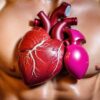Post Cycle Therapy, commonly known as PCT, refers to a regimen that individuals follow after completing a cycle of anabolic steroids or other performance-enhancing substances. The primary goal of PCT is to help restore the body’s natural hormone levels, particularly testosterone. When someone uses anabolic steroids, their body often reduces its own testosterone production.
PCT aims to kickstart this production again. Typically, PCT involves a combination of medications and supplements designed to stimulate the body’s endocrine system. This process helps mitigate the side effects associated with steroid use, such as hormonal imbalances and mood swings.
Many athletes and bodybuilders consider PCT an essential part of their training regimen to maintain gains and overall health.
Key Takeaways
- Post Cycle Therapy (PCT) is a method used by individuals who have completed a cycle of anabolic steroids or other performance-enhancing drugs to help restore their body’s natural hormone levels.
- PCT is important for restoring hormonal balance, preventing side effects such as gynecomastia and infertility, and maintaining gains made during the cycle.
- Common misconceptions about PCT include the belief that it is only necessary for heavy steroid users and that natural testosterone boosters can replace it.
- Not implementing PCT can lead to a range of risks, including hormonal imbalances, loss of muscle mass, and long-term damage to the endocrine system.
- Different approaches to PCT include using selective estrogen receptor modulators (SERMs) and aromatase inhibitors, as well as adjusting training and nutrition to support hormone recovery.
The Importance of Post Cycle Therapy
Post Cycle Therapy plays a crucial role in maintaining hormonal balance after steroid use. Without it, individuals may experience significant drops in testosterone levels. This drop can lead to various issues, including fatigue, depression, and loss of muscle mass.
PCT helps prevent these negative outcomes by promoting natural hormone production.
Many users worry about losing muscle mass after stopping steroids.
A well-structured PCT can minimize this loss and support continued progress in strength and physique. Therefore, implementing PCT is vital for anyone serious about their fitness journey.
Common Misconceptions About Post Cycle Therapy

Many misconceptions surround Post Cycle Therapy, leading to confusion among users. One common myth is that PCT is unnecessary if one uses low doses of steroids. However, even low doses can suppress natural testosterone production.
Therefore, everyone who cycles steroids should consider PCT. Another misconception is that PCT guarantees no side effects after steroid use. While it significantly reduces risks, it does not eliminate them entirely.
Users may still experience some hormonal fluctuations or other side effects. Understanding these realities is essential for anyone considering or completing a steroid cycle.
The Risks of Not Implementing Post Cycle Therapy
Neglecting Post Cycle Therapy can lead to severe health consequences. One major risk is prolonged low testosterone levels, which can result in various physical and mental health issues. Symptoms may include decreased libido, fatigue, and mood disorders.
These effects can linger long after the steroid cycle ends. Additionally, without PCT, users may face a higher likelihood of developing gynecomastia or other hormonal imbalances. These conditions can be uncomfortable and may require medical intervention.
Overall, skipping PCT poses significant risks that can affect both short-term and long-term health.
Different Approaches to Post Cycle Therapy
There are several approaches to Post Cycle Therapy, each tailored to individual needs and circumstances. Some users opt for pharmaceutical options like Clomid or Nolvadex, which stimulate natural testosterone production. These medications can effectively restore hormonal balance but may come with side effects.
Others may choose a more natural approach, utilizing herbal supplements and lifestyle changes. Ingredients like fenugreek and ashwagandha can support hormone levels without pharmaceuticals. This method often appeals to those seeking a gentler way to recover from steroid use while still achieving positive results.
The Role of Supplements in Post Cycle Therapy

Supplements play a significant role in enhancing the effectiveness of Post Cycle Therapy. Many users incorporate specific vitamins and minerals to support overall health during recovery. Zinc and vitamin D are particularly important for maintaining testosterone levels and overall well-being.
Additionally, some supplements focus on liver health and detoxification. After a steroid cycle, the liver may need extra support to process any remaining substances. Milk thistle and N-acetylcysteine (NAC) are popular choices for promoting liver function during PCT.
The Importance of Consulting a Healthcare Professional for Post Cycle Therapy
Consulting a healthcare professional before starting Post Cycle Therapy is crucial for safety and effectiveness. A doctor can provide personalized advice based on individual health history and goals. They can also recommend appropriate medications or supplements tailored to specific needs.
Moreover, healthcare professionals can monitor hormone levels during PCT. Regular blood tests can help track progress and ensure that hormone levels return to normal ranges. This oversight minimizes risks and enhances the overall success of the recovery process.
The Truth About Post Cycle Therapy
Post Cycle Therapy is an essential component for anyone who has used anabolic steroids or performance-enhancing substances. It helps restore hormonal balance and preserves gains made during a cycle. Understanding its importance can significantly impact an individual’s health and fitness journey.
Despite common misconceptions, PCT is necessary for all users, regardless of dosage or experience level. Neglecting it poses serious risks that can affect both physical and mental well-being. By exploring different approaches and consulting healthcare professionals, individuals can navigate their recovery effectively.
In conclusion, the truth about Post Cycle Therapy lies in its necessity for safe recovery after steroid use. Prioritizing PCT ensures a healthier transition back to natural hormone production while minimizing potential side effects. For anyone serious about their fitness goals, understanding and implementing PCT is vital for long-term success and well-being.
FAQs
What is PCT (Post Cycle Therapy)?
Post Cycle Therapy (PCT) is a protocol used by bodybuilders and athletes who have completed a cycle of anabolic steroids or other performance-enhancing drugs. The goal of PCT is to help the body recover its natural hormone production and minimize the side effects of coming off a cycle.
What are the common drugs used in PCT?
The most common drugs used in PCT include selective estrogen receptor modulators (SERMs) such as tamoxifen (Nolvadex) and clomiphene (Clomid), as well as aromatase inhibitors (AIs) such as anastrozole (Arimidex) and letrozole (Femara).
What are the benefits of PCT?
PCT can help restore natural testosterone production, reduce estrogen levels, prevent gynecomastia (enlargement of male breast tissue), and minimize other side effects associated with coming off a steroid cycle.
Is PCT necessary after a steroid cycle?
Yes, PCT is generally considered necessary after a steroid cycle to help the body recover its natural hormone production and minimize the negative effects of coming off the cycle.
What are the potential side effects of PCT drugs?
Common side effects of PCT drugs may include hot flashes, mood swings, headaches, and gastrointestinal issues. It is important to consult with a healthcare professional before starting PCT to understand the potential risks and benefits.













